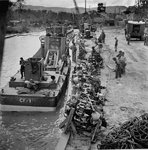Snautzer01
Honourably banned
- 38,221
- Mar 26, 2007
Follow along with the video below to see how to install our site as a web app on your home screen.
Note: This feature may not be available in some browsers.
Ad: This forum contains affiliate links to products on Amazon and eBay. More information in Terms and rules
Apparently they took the engines and planes back. As one picture above shows that they were loaded carefully on trucks (one picture shows them on the road) not bulldozed into a pit
there is another set of pic that speak of yet another batch of captured planes,including a B5N Kate with avs antennas
Now i now of several japanese planes that were tested , but not 24 in a single batch with spares.
That's quite a few. I wonder what became of them.
Good question. 20+ Zeroes would be noticeable.
This one is at the Air Force Museum. Could be one of that group
This one is at the Air Force Museum. Could be one of that group



